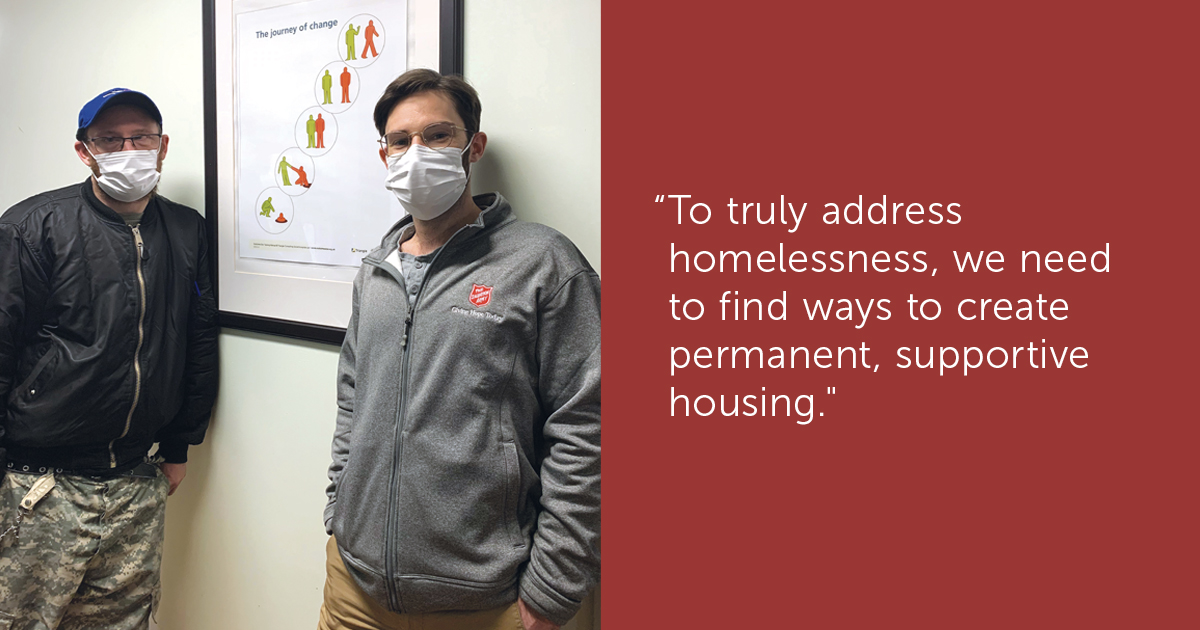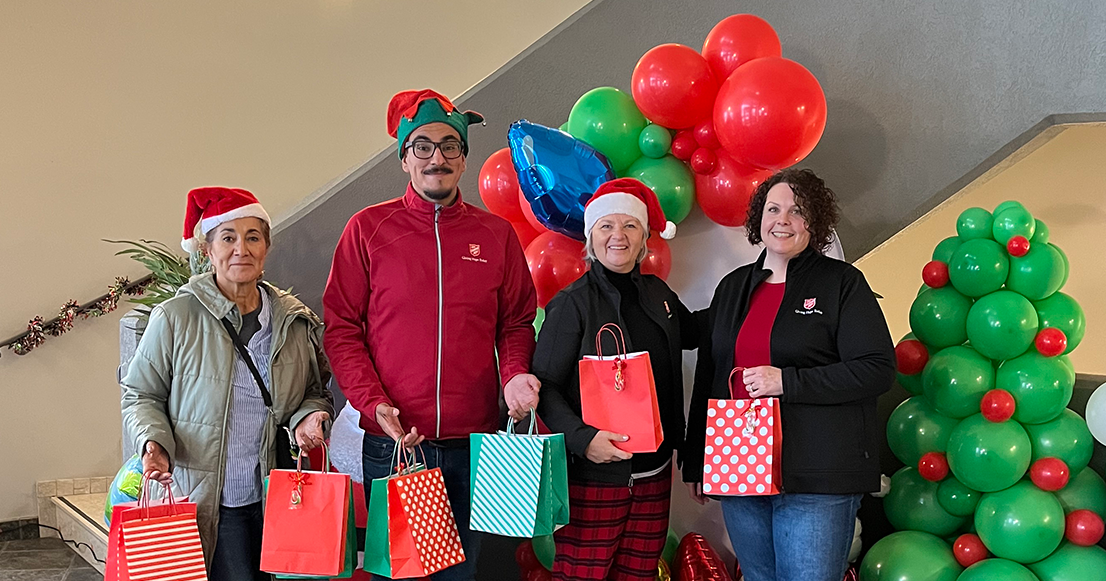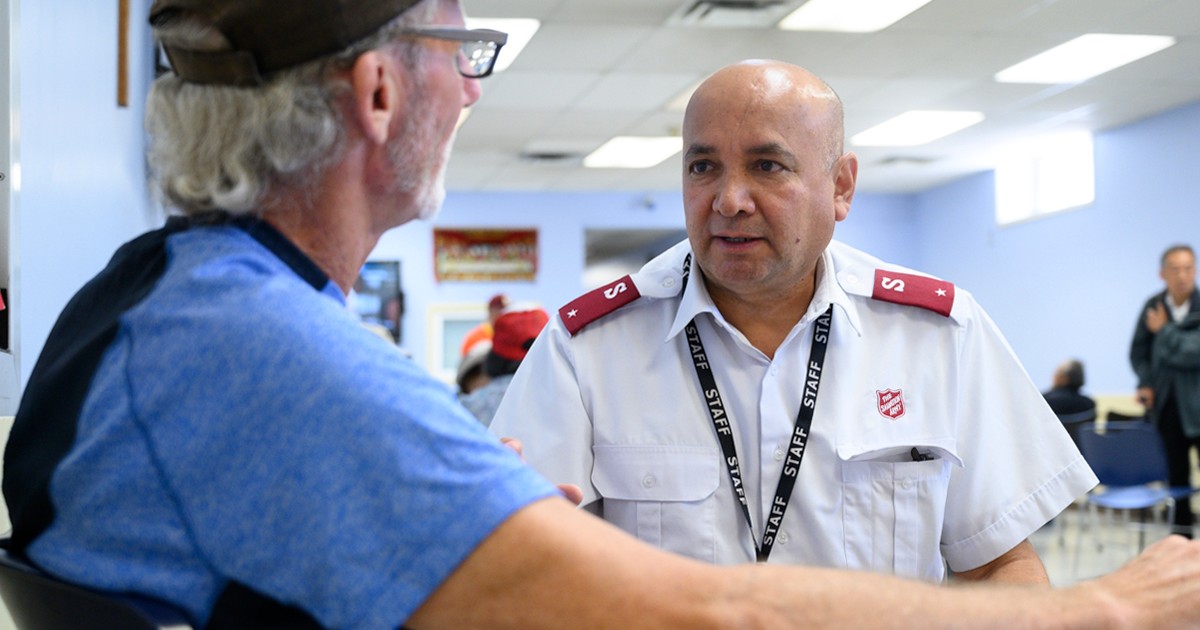I remember starting to feel nervous in January 2020. At that time, the “novel coronavirus” that later became known as COVID-19 was only circulating in a few parts of the world. As the news coverage intensified, it became increasingly clear that COVID-19 had the potential to become a global pandemic and, more importantly, that we would need to be prepared.
At The Salvation Army Gateway, a shelter in downtown Toronto, we already had a pandemic plan in place, but we quickly realized it needed to be specifically tailored to COVID-19. We spent January and February updating the plan based on what we could gather from the news—although in hindsight, we still really had no idea what we were dealing with or how to prepare.
That now feels like decades ago. Our understanding of COVID-19 and its transmissibility has evolved dramatically since then and, similarly, our response as an emergency shelter and our thoughts on how best to support people experiencing homelessness have evolved along with it.
Biggest Victory
When the pandemic hit in March 2020, we were able to move quickly. We put up barriers at key locations in our building and were able to procure thermometers, which allowed us to complete daily health screenings with all residents and staff. But there were still a number of gaps in our pandemic response, most notably our lack of personal protective equipment (PPE). We didn’t have access to any PPE, such as masks, during those first few months; our staff were purchasing masks wherever they could find them and bringing them to work. I really believe that God protected us in those first few months. Somehow, with a crowded building, no PPE and no vaccines, we didn’t have any cases of COVID-19.
The biggest victory for us in the first wave was reducing the occupancy of our shelter. Before the pandemic, we had 120 people living at Gateway and, on any given day, 10 to 15 staff coming through the building. That’s a lot of people in a small space! Thankfully, in mid-May we were able to partner with the City of Toronto to begin moving some of our residents into hotels. We continued to do this over the course of May and June, eventually reducing our capacity to 54, which allowed us to practise proper physical distancing everywhere in the building.
Close Call
During the first year of the pandemic we had a few isolated cases of COVID-19, but no significant problems until a case was confirmed in February 2021. This confirmed case resulted in 10 residents being identified as high-risk close contacts, and our challenge became finding a way to isolate the close contacts who may have been exposed.
The City of Toronto was operating an isolation hotel for this purpose, but at the time it was full on account of a high number of outbreaks across the shelter system. We had instructions from Toronto Public Health to isolate our 10 close contacts, but we simply had no place for them to go. On the first night, we had these residents sleep in staff offices in order to keep them separate from our other residents. That was really tough.
Our assistant director and I spent hours that night and the following day calling hotels across the city, trying to find rooms for our residents to isolate, but we kept hitting roadblock after roadblock. By the grace of God, we eventually found enough rooms at a hotel within walking distance from our shelter, and our close contacts stayed there. Our staff went above and beyond over the next 10 days to make sure that all meals were delivered and that everyone was monitored for COVID symptoms. Thanks to these efforts, we avoided an outbreak.
To truly address homelessness and begin building just communities where people feel safe and secure, we need to find ways to create permanent, supportive housing.
The cost of the hotel bill was a significant financial hit for us, but we would do it again in a heartbeat. Everyone who comes into our shelter deserves to be treated with respect and dignity, and that includes the ability to isolate comfortably and safely during a pandemic. It’s not possible to do that without having your own space.
On Board
Not long after that challenging time, we experienced one of our best days at the shelter during the pandemic. On March 24, 2021, a team from Unity Health came to our shelter and provided on-site vaccinations. It felt like a celebration—obviously, we knew we had a long way to go, but it was such a victory to finally get our residents vaccinated. We’ve always focused on building trust and rapport with our residents, and those existing relationships were extremely helpful for getting people on board when the vaccines became available. We took time to provide information about the vaccines, talked about the pros and cons, and we had really good uptake. Today, all of our staff and 85 percent of our residents are fully vaccinated.
Our residents deserve a lot of credit for how they have responded throughout the whole pandemic. For the most part, they’ve been very quick to adopt and follow all of the protocols we’ve put in place, and they’ve been patient with us as we’ve learned what works and what doesn’t. We’ve also seen countless examples of our residents caring for each other and looking out for the Gateway staff, so it’s very much felt like we’re in it together. That’s been a silver lining in this experience.
Rethinking Shelters
The pandemic has given us an opportunity to rethink how shelters are operated and what could be done better. When Gateway first opened in February 2000, we offered 100 beds. At the request of the City of Toronto, that number gradually increased, and by 2018 our capacity had risen to 120. We allowed it to get that high because people experiencing homelessness in Toronto were dying from exposure in the winter months, and we wanted to do everything we possibly could to stop that from happening. What was missing from our calculus was the threat posed by a public health crisis of this magnitude, and how detrimental that could be to individuals relying on us for shelter.
Homelessness is stressful—not only because of the events that happened in a person’s life that resulted in them having no place to go, but also the experience of living in a shelter itself. There’s so much that you suddenly don’t have control over: who your neighbours are, what meals are being served, what time you need to get up, how situations are handled. It really isn’t an easy thing to go through.
So it’s been striking to witness the difference that lowering our capacity has made. A reduction of 50 percent (we now have 54 residents) has led to a decrease in incidents and complaints by more than 75 percent. In retrospect, it seems obvious, but our residents feel less stressed and anxious because they have more physical space; they’re not constantly bumping into each other, and it’s easier to take a shower, do your laundry or find a quiet place. Our residents still only have two metres separating their bed from their neighbour’s, but we’ve learned that even just a little bit more space translates into a significant decrease in stress, and a significant increase in dignity.
Just Communities
Now that we’ve seen what a difference space makes, it’s hard to imagine ever going back. It also forces the question: How much better off would our residents be if they not only had more space, but their own space, with their own washroom and kitchen, and their own door they could lock?
Emergency shelters are an important part of responding to homelessness, but as the housing crisis in Canada has continued to worsen, they’ve become less effective at solving the problem. To truly address homelessness and begin building just communities where people feel safe and secure, we also need to find ways to create permanent, supportive housing.
Working Together
I’m very proud of the work we do at Gateway, and I’m especially proud of our staff, who’ve displayed an immense amount of courage and have risen to the many challenges of the past two years. But it hasn’t been perfect. Despite our best efforts, our shelter has experienced three COVID outbreaks since September 2021, and that’s in large part because we’re a congregate setting that isn’t set up well to navigate a pandemic.
When I think back to our close contacts who had nowhere to isolate when they may have been exposed to COVID-19, it’s clear that only permanent housing can fully solve that problem. And permanent housing—somewhere that’s safe, where you don’t have to worry about the actions of other people—is also a clear pathway to dignity for so many of the people we serve. I know it’s a tall task, but I’m confident we can achieve it. After all, we’re The Salvation Army. Let’s work together and find ways of making it happen.
Jake Aikenhead is the director of The Salvation Army Gateway in Toronto.
This story is from:










Comment
On Wednesday, May 25, 2022, Neil Church said:
Leave a Comment